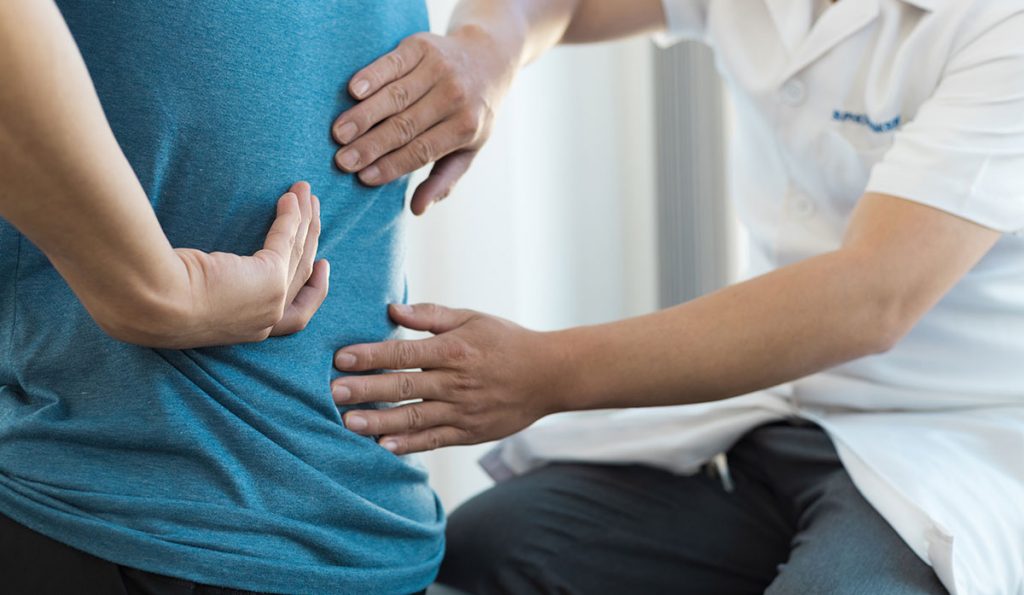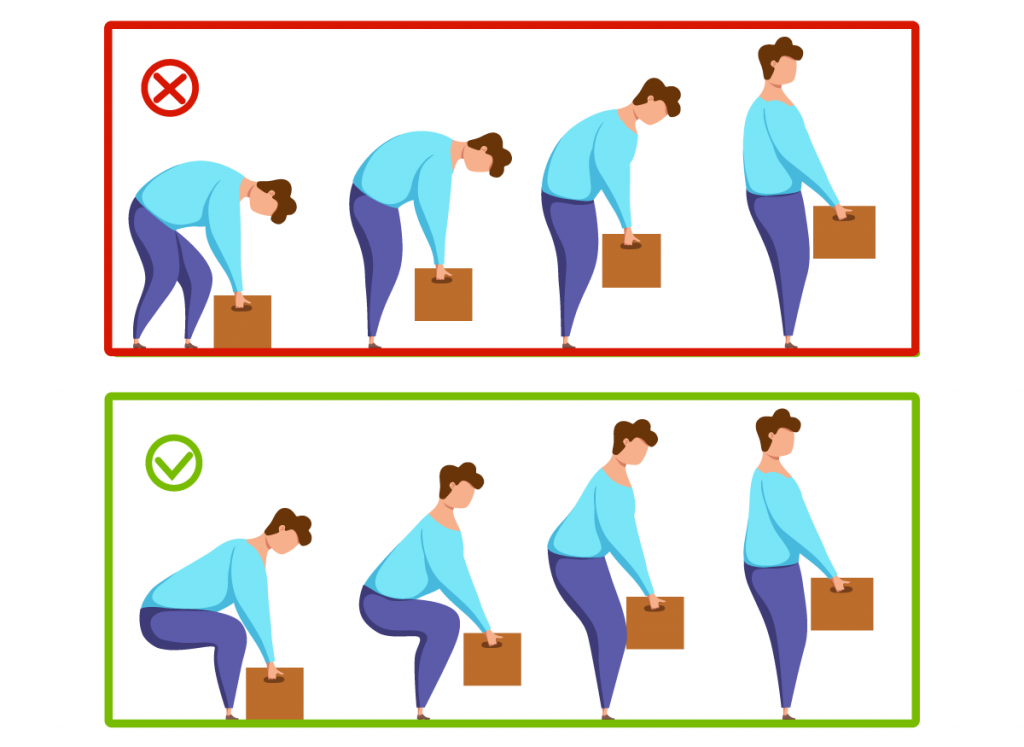Injury Prevention in Healthcare Workers
Musculoskeletal injuries, also known as ergonomic or overexertion injuries, are common among workers in all healthcare settings, from acute care hospitals to long-term care and ambulatory facilities. Wherever there are patients, there are opportunities to become injured in the course of care. Healthcare workers suffer these injuries at a rate much higher than the general population of workers, even those in construction, mining, and manufacturing (Safety and Health Topics).
Many healthcare workers suffer musculoskeletal injuries (such as back and shoulder muscle strain or vertebral disc herniation) as a result of routine work duties, despite many strategies available to reduce these injuries. Healthcare workers typically experience injuries caused by overexertion, excessive physical effort, or repetitive motion. According to the U.S. Bureau of Labor Statistics as many as three-quarters of nurses have experienced back injury and pain from working with patients, and most of those injuries were recent (occurring in the previous year). This rate of musculoskeletal injury is among the highest of all industries and professions in the United States (Dressner & Kissinger).

Work-related musculoskeletal injuries have been classified by the World Health Organization in two categories: acute and chronic injuries. Acute injuries are those that have occurred recently and may require immediate care from a health care professional. Chronic injuries happen slowly over time and lead to lingering soreness and discomfort within the body; care from a health care professional is also indicated, depending on the nature and severity of the chronic injury, and whether or not it influences performance in the workplace (Prall & Ross).
Patient handling tasks, such as transferring patients from bed to chair or commode, and repositioning patients in bed, are blamed for most of the sprains and strains to the neck, shoulders, and lower back experienced by healthcare workers. However, the manual load involved in lifting and transferring patients is not the only source of muscle strain. Tasks that involve bending over the patient, such as bathing, performing procedures, or pushing wheelchairs and gurneys, also contribute to cumulative injury. Static load, caused by working or standing in a nonergonomic position, can strain the muscles as well. Consequently, even healthcare workers who don't routinely lift or move heavy patients can suffer back and neck pain.
When it comes to preventing back injuries in healthcare settings for workers, this often requires an integrated approach. There’s no way to completely avoid the motions required for patient care, but there are things you can do to lessen the threat of career-ending back pain.
1. Exercise to Strengthen the Support of Your Back Muscles.
The muscles that support the spine’s vertebrae are the most common source of back pain – especially if muscles are weak, tight, or tired. Combine aerobic exercises, such as swimming or walking, with exercises that strengthen and stretch your back muscles and abdomen. Exercises that increase your balance and strength, such as yoga and weight-bearing exercises, can also decrease your risk of falling and injuring your back.
2. Maintain Good Body Posture.
When standing, balance your weight evenly on your feet. Don't slouch. To promote good posture when sitting, choose a chair that supports your lower back. Adjust the height of your chair so that your feet rest flat on the floor or on a footrest and your thighs are parallel to the floor.
3. Watch Your Weight.
Extra weight puts more force on the back and stomach muscles, so maintaining a healthy weight can reduce the risk of strain and pain.
4. Wear A Comfortable Pair of Shoes.
A good pair of shoes improves body alignment to achieve good posture and prevent lower back pain. Choose low-heeled and non-slip closed shoes. Ensure that the arch support of the shoes is fit for your sole.
5. Practice Proper Body Mechanics.
Proper body mechanics include:
- Bend at your hips and knees instead of your waist. This helps you maintain your balance by dividing your weight evenly between your upper and lower body.
- Spread your feet apart to create a foundation of support. This helps you maintain your balance from side to side.
- Keep your back, neck, pelvis, and feet aligned when you turn or move. Do not twist or bend at your waist.
- Push rather than pull objects.
- Ask for help or use an available device for assistance.
6. Eat A Healthy Diet.
Ensure you get enough calcium and vitamin D. These nutrients can help prevent a condition that causes your bones to become weak and brittle (osteoporosis). Osteoporosis is responsible for many bone fractures that lead to back pain.
7. If you smoke, quit.
Smoking reduces blood flow to your lower spine, which can contribute to spinal disk degeneration and slow healing from back injuries. Coughing associated with smoking can also cause back pain.
8. Evaluate Your Sleeping Position.
The best sleep position is on the back. It evenly distributes weight across the body and reduces pressure points. Side sleepers should alternate sides to decrease pressure points and place a pillow between the knees to align the spine. Avoid sleeping on the stomach as it puts pressure on the spine and places the neck in an unnatural position. When sleeping on a soft mattress, place plywood between the mattress and box spring for better support. Follow recommended guidelines for turning and replacing your mattress so that you are not making your back vulnerable while you sleep.
9. Push Rather Than Pull When Moving Equipment.
Pushing is a better movement as it uses the worker’s own body weight as leverage, versus pulling which requires higher energy exertion.
10. Lift Wisely and With Caution.
Lift gradually with your legs without using jerky motions. By using your leg strength, your chance of lower back injury is greatly reduced.

11. Reduce Stress and Have A Positive Outlook at Work.
It is almost impossible to eliminate stress in healthcare facilities, but you can handle it in a better way if you maintain a positive outlook at work. When you can properly handle stress at work, you can be more efficient and attentive. Your body will develop adaptive mechanisms whenever under intense stress and pressure to avoid stress-related muscle strain and back pain. Stress causes you to tense your muscles, and constant tension of this kind can cause back pain. Stress reduction activities can include yoga, meditation, deep breathing, and guided imagery (Simple Ways to Prevent Back Pain at Work).
Back injury prevention training in addition to taking steps to avoid and prevent back pain and injuries are critical in the healthcare industry. The nature of the work makes healthcare workers especially vulnerable to injury when proper guidelines are not followed. Proper training and healthy habits can help prevent injury, which in turn, reduces absenteeism, medical expenses, worker’s compensation, and disability claims, turnover, and operating costs. The protection and well-being of healthcare workers improve the quality of their lives and allow them to focus their attention on the well-being of the patients they serve.
References
Dressner, M., & Kissinger, S. (2018). Occupational injuries and illnesses among registered nurses. Monthly Labor Review. https://doi.org/10.21916/mlr.2018.27
Prall, J., & Ross, M. (2019). The management of work-related musculoskeletal injuries in an occupational health setting: the role of the physical therapist. Journal of Exercise Rehabilitation, 15(2), 193–199. https://doi.org/10.12965/jer.1836636.318
Safety and Health Topics | Healthcare - Safe Patient Handling | Occupational Safety and Health Administration. (2019). Osha.gov. Retrieved from https://www.osha.gov/SLTC/healthcarefacilities/safepatienthandling.html
Simple ways to prevent back pain at work. (2019). Mayo Clinic. Retrieved from https://www.mayoclinic.org/healthy-lifestyle/adult-health/in-depth/back-pain/art-2004452
Article by:
Jessica Chavez, MSN, MBA, RN
Director, Clinical Services
Accountable Healthcare Staffing, Inc.